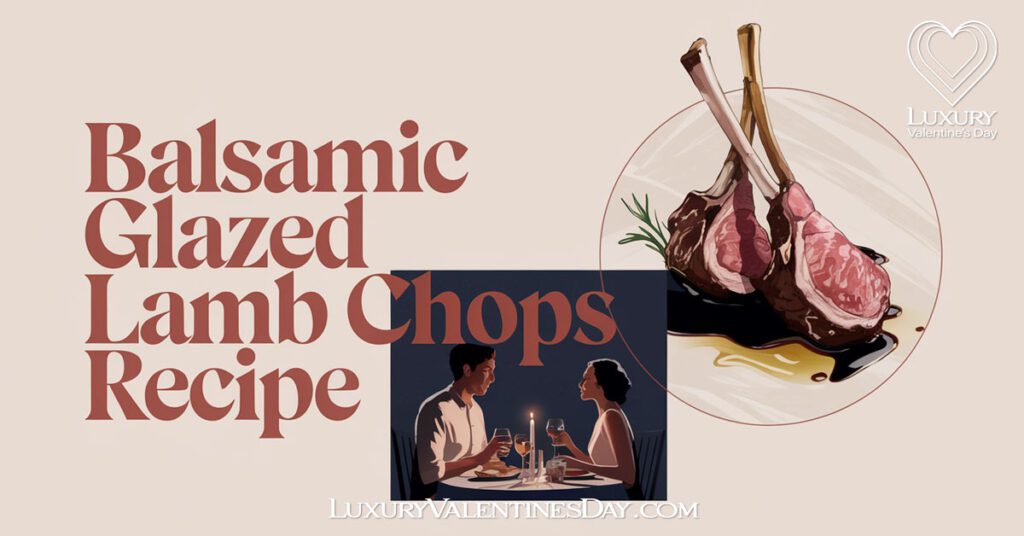
Table of Contents
ToggleUnveiling the Heartbeat of History: How Valentine’s Day Customs Have Transformed
Valentine’s Day, a celebration etched deeply in the heart of history, unveils a story as intriguing as love itself. This article is your passport through time, showcasing how this day of affection has evolved from ancient rituals to today’s digital expressions of love. As a seasoned travel writer who’s witnessed these transformations globally, I invite you to explore the rich tapestry of Valentine’s Day traditions, each chapter brimming with romance and cultural shifts.
Key Takeaways:
- Ancient Beginnings: Dive into the roots of Valentine’s Day, where ancient rituals set the stage for a millennia-old tradition. Discover how these early customs laid the foundation for a global celebration.
- Medieval Romance: Step into the world of chivalry and courtly love. See how medieval tales and practices turned February 14th into a day for romance, shaping the Valentine’s Day we know today.
- Victorian Elegance: Uncover the era that revolutionized Valentine’s Day with ornate cards and gifts, setting a benchmark for romantic expressions.
- Modern-Day Celebrations: Witness the transformation into a high-tech, global phenomenon, where tradition meets contemporary flare.
- Global Influence: Embark on a cultural voyage, exploring unique Valentine’s Day customs from around the world, reflecting the universal language of love.
Ancient Roots and Roman Rituals
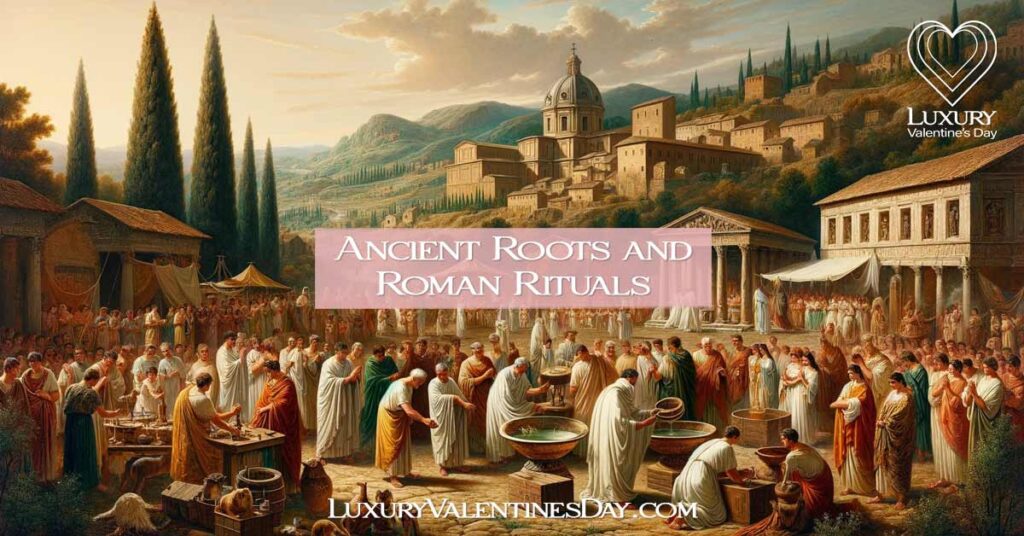
Long before Valentine’s Day became synonymous with love letters and chocolate hearts, it had its beginnings in ancient Rome, under a different guise. The festival of Lupercalia, celebrated in mid-February, was more than just a ritual; it was a thread in the fabric of Roman society, deeply intertwined with their views on fertility and health. But how did this seemingly unromantic festival evolve into the Valentine’s Day we know today?
The Lupercalia festival, often associated with the Valentine’s Day origin as a pagan celebration, was a time where Romans believed they could avert evil spirits and purify the city, releasing health and fertility. Priests, known as Luperci, would gather at a sacred cave, believed to be the place where the founders of Rome, Romulus and Remus, were nurtured by a she-wolf. The rituals involved sacrifices, after which the Luperci would cut strips, or thongs, from the skins of the animals. These were then used to gently slap women and crop fields, an act believed to bring fertility.
As Rome gradually embraced Christianity, the pagan rituals of Lupercalia became less palatable. In an effort to “Christianize” these traditions, Pope Gelasius I, in the 5th century, declared February 14th as St. Valentine’s Day. The transformation wasn’t just a change in name; it marked the transition of a festival from a focus on fertility to one that celebrated love. This pivotal shift is what began the journey towards the modern history Valentine’s Day as we understand it.
But who is Saint Valentine, and why was he associated with this festival? Several legends exist, with the most popular being that of a priest who defied Emperor Claudius II’s ban on marriages for young soldiers. Valentine, believing in the sanctity of love and marriage, secretly officiated weddings for these soldiers. His defiance, which eventually led to his execution, became a symbol of enduring love and sacrifice.
Thus, the roots of Valentine’s Day, intertwined with ancient rituals and Christian martyrdom, set the stage for a celebration that would grow and evolve over centuries. While its Valentine’s Day origin pagan aspects were left behind, the core idea of celebrating love and affection remained, transforming into a day that resonates with people across the globe, regardless of their cultural or religious backgrounds.
Chivalry and Courtly Love in the Middle Ages
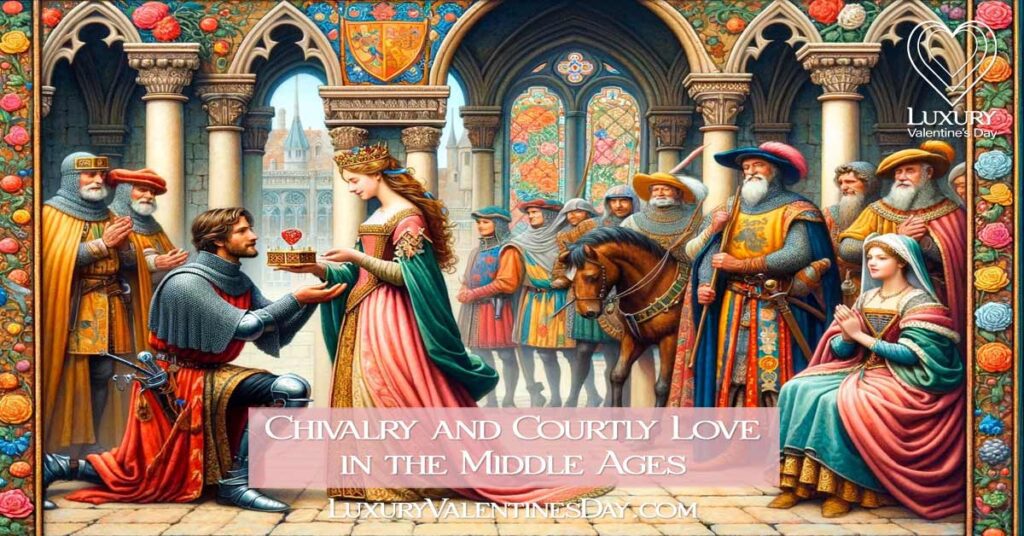
The Middle Ages, renowned for its knights and tales of heroism, were also a crucible for the evolution of Valentine’s Day into a celebration of romantic love. This period saw the emergence of courtly love, a concept that left an indelible mark on medieval Valentine’s Day customs.
Courtly love was a medieval European literary conception of love that emphasized nobility and chivalry. Rooted in the poetry of troubadours and the ethos of knighthood, this idealized form of love was characterized by a series of ritualistic and often unattainable courtships. Knights would express their devotion through acts of valor, poetry, and song, often directed towards a lady of higher social standing. This notion of love was not just about passion; it was also about admiration, respect, and the pursuit of virtue.
Valentine’s Day found its romantic soul in this era, as it became increasingly associated with the expression of love and admiration. By the 14th century, it was common for lovers to exchange love notes and call each other their “Valentines.” One of the earliest recorded Valentine’s messages was written by Charles, Duke of Orléans, to his wife while he was imprisoned in the Tower of London. His poem, laden with longing and affection, is a testament to the romantic spirit that had begun to infuse Valentine’s Day.
Furthermore, the legendary poet Geoffrey Chaucer, in his work “Parliament of Foules,” wrote, “For this was on St. Valentine’s Day, when every bird cometh there to choose his mate,” linking the day directly with romantic love. This reference is often cited as the start of the modern tradition of celebrating love on Valentine’s Day.
During the Middle Ages, Valentine’s Day thus evolved from a religious observance into a day marked by poetic expressions of love, grand gestures of devotion, and the exchange of tokens of affection. This shift from religious to romantic celebration laid the groundwork for how Valentine’s Day is perceived and celebrated today – a day not just for lovers, but for expressing all forms of love and appreciation.
Victorian Innovations and the Art of Expression
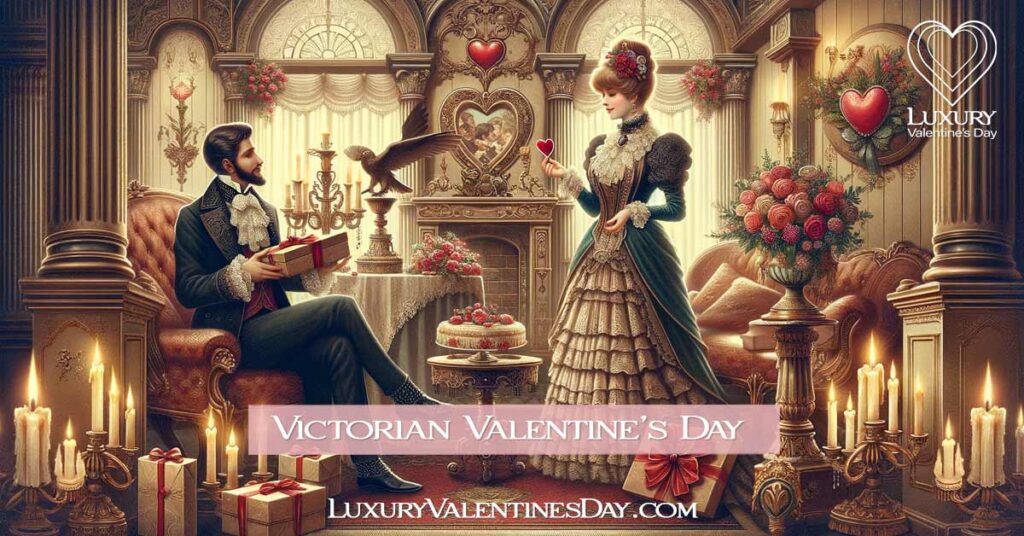
The Victorian era, a period marked by its distinctive cultural norms and rapid industrial advancements, brought about significant changes in the way Valentine’s Day was celebrated. It was during this time that Valentine’s Day cards and gifts (learn more about the history of Valentine’s Day cards here), as we know them today, began to take shape, propelled by both the industrial revolution and the era’s unique sensibilities.
The industrial revolution played a crucial role in this transformation. With advancements in printing technology and mass production, Valentine’s Day cards became more accessible to the public. No longer were these cards handmade and exclusively exchanged among the elite; they were now a commodity that could be enjoyed by people from various social classes. This democratization of Valentine’s Day cards was a significant shift, allowing more people to participate in the tradition of expressing love and affection.
Victorian sensibilities also heavily influenced the design and content of these cards. During this era, there was a certain prudence and formality in romantic expressions. Valentine’s cards from this period were often ornate, embellished with lace and ribbons, and adorned with images of flowers, love knots, and cupids – symbols that are still associated with romance today. The language used in these cards was also characteristic of the time, often poetic and filled with sentiment, reflecting the Victorian ideal of romance and courtship.
Additionally, the tradition of giving gifts alongside cards started to become popular. Presents such as chocolates, jewelry, and other tokens of affection were exchanged, adding another layer to the Valentine’s Day celebration. The Victorians, known for their attention to detail and symbolism, often chose gifts that held specific meanings. For instance, the type of flower given could convey a particular message, with red roses symbolizing love and passion.
In essence, the Victorian era reshaped Valentine’s Day into a more elaborate and expressive celebration. The innovations in production and the cultural nuances of the time gave rise to traditions that have endured and continue to define how we celebrate love on Valentine’s Day. The legacy of Victorian Valentine’s Day cards and gifts is a testament to the era’s influence on this romantic holiday.
The 20th Century and Beyond: Commercialization and Globalization
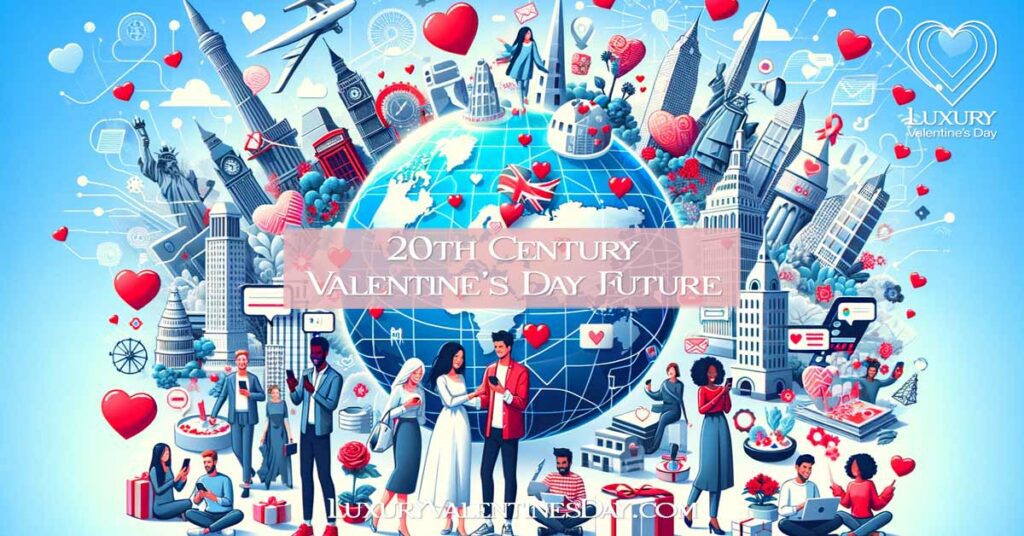
The 20th century marked a significant turning point in the evolution of Valentine’s Day, with technological advancements and globalization reshaping it into a more commercial and widely celebrated event. This era saw Valentine’s Day transcend cultural and geographical boundaries, becoming a global phenomenon.
Technological advancements played a crucial role in this transformation. The advent of the internet and digital communication tools revolutionized the way people express love and affection. Electronic greeting cards, online flower delivery services, and e-commerce platforms made it easier to send Valentine’s gifts, regardless of geographical distance. This convenience helped spread Valentine’s Day celebrations to different parts of the world, making it more inclusive and accessible.
The commercialization of Valentine’s Day also gained momentum in the 20th century. Retailers and marketers seized the opportunity to capitalize on the day’s romantic significance, promoting a wide range of products and services. From heart-shaped chocolates to romantic getaways, Valentine’s Day became an occasion for significant consumer spending. This commercial aspect, while criticized by some as detracting from the day’s emotional value, undoubtedly contributed to its popularity and visibility.
Global influences further enriched Valentine’s Day traditions. As the holiday spread to different countries, it began to incorporate elements from various cultures, adding diversity to its celebration. In some countries, Valentine’s Day took on unique local flavors, blending traditional customs with modern practices. For instance, in Japan, it’s customary for women to give chocolates to men on Valentine’s Day, a tradition that is distinct from Western norms.
The 20th century, therefore, was a period of significant change for Valentine’s Day, shaping it into a multifaceted global event. This era’s impact is evident in the widespread, diverse, and commercial nature of modern Valentine’s Day celebrations, highlighting how technological and global developments can redefine a centuries-old tradition.
Contemporary Trends and Digital Celebrations
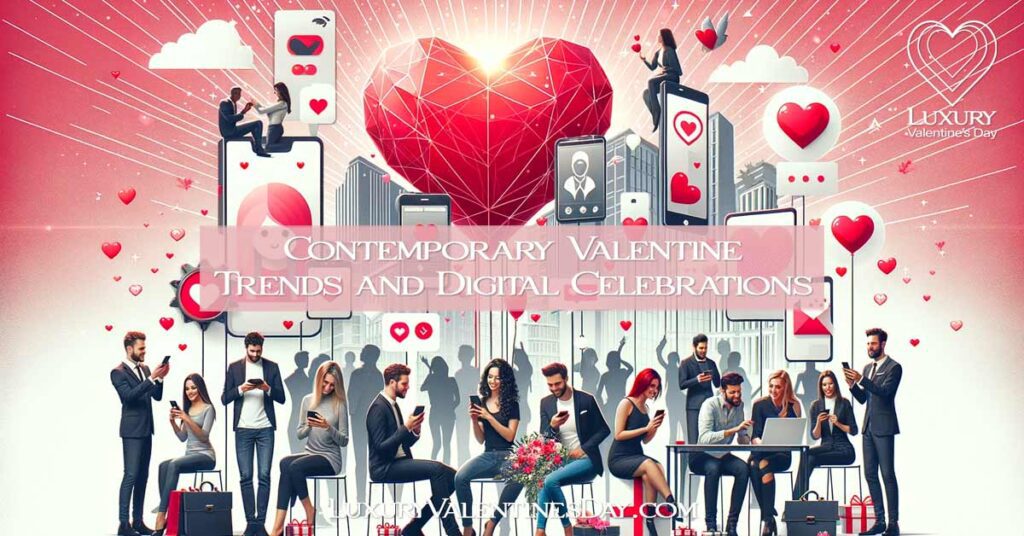
In the current digital era, Valentine’s Day customs have undergone a remarkable transformation, largely influenced by social media, e-commerce, and digital communication. These technological advances have not only changed how we express love but also broadened the scope of Valentine’s Day celebrations.
Social media has had a profound impact on Valentine’s Day. Platforms like Instagram, Twitter, and Facebook have become arenas for public declarations of love, with couples sharing photos, love-filled posts, and romantic experiences. This public display of affection, a stark contrast to the private love notes of the past, reflects the evolving nature of romantic expression in the digital age. Social media also encourages a more inclusive celebration, with friends and family members exchanging messages of love and appreciation, expanding the traditional romantic focus of the day.
E-commerce has revolutionized Valentine’s Day shopping. The convenience of online stores allows for a wide range of gifts to be browsed, purchased, and delivered with just a few clicks. This ease of access has led to a significant increase in gift-giving, making it possible to send elaborate surprises across the globe. Moreover, the rise of personalized gifts offered by online retailers adds a unique touch to the Valentine’s Day experience, allowing individuals to customize gifts in a way that was not possible before.
Digital communication, including instant messaging apps and video calls, has also played a pivotal role in transforming Valentine’s Day celebrations. For long-distance relationships, technology provides a means to connect and celebrate together, despite physical separation. Romantic video dates, online games, and virtual gift exchanges have become part of the modern Valentine’s Day experience, showcasing the adaptability of this holiday to technological advancements.
The impact of these digital trends on Valentine’s Day is clear. They have made the celebration more accessible, diverse, and personalized than ever before. As we continue to embrace digital technology in our daily lives, it is likely that Valentine’s Day customs will continue to evolve, reflecting the changing ways we connect and express love in the digital age.
Valentine’s Day Around the World

The global celebration of Valentine’s Day is a vibrant tapestry, reflecting a myriad of cultural nuances and traditions. Beyond the well-known customs in Western countries, many other regions and cultures have embraced Valentine’s Day, infusing it with local traditions and unique celebratory practices.
In Denmark, Valentine’s Day has been embraced relatively recently. Here, the tradition of “lover’s cards” is popular, where sweethearts exchange pressed white flowers called snowdrops. Danes also celebrate with a twist on the love letter called a “gaekkebrev.” These are funny poems or rhymes written on intricately cut paper and signed anonymously with dots. If the recipient guesses the sender’s identity correctly, they earn an Easter egg later that year.
In Estonia, Valentine’s Day, known as “Sõbrapäev,” is more about celebrating friendship than romantic love. People take the opportunity to cherish all their loved ones, friends, and family, making it a celebration of general love and appreciation, rather than exclusively romantic relationships.
In South Africa, it’s not uncommon for young women to literally wear their hearts on their sleeves on Valentine’s Day, pinning the names of their love interest on their shirtsleeves, an ancient Roman tradition known as “Lupercalia.” This practice has led to some interesting Valentine’s Day revelations!
In Ghana, February 14th is celebrated as “National Chocolate Day.” Ghana is one of the world’s largest cocoa-producing countries, and this day is dedicated to promoting the use of chocolate as part of the celebration. It’s a day of festivals, music, and of course, chocolate, highlighting the nation’s rich cocoa heritage.
In the Philippines, Valentine’s Day is a popular day for weddings and mass wedding ceremonies. These are often sponsored by the government as a form of public service, allowing couples to marry or renew their vows in a large, communal setting, turning the day into a grand celebration of love and commitment.
Each of these unique celebrations underlines the versatility and universal appeal of Valentine’s Day around the world. From Denmark’s poetic jokes to Ghana’s chocolate festivities, these global customs highlight the many ways love and affection are expressed around the world.
FAQs about the Evolution of Valentine’s Day Traditions
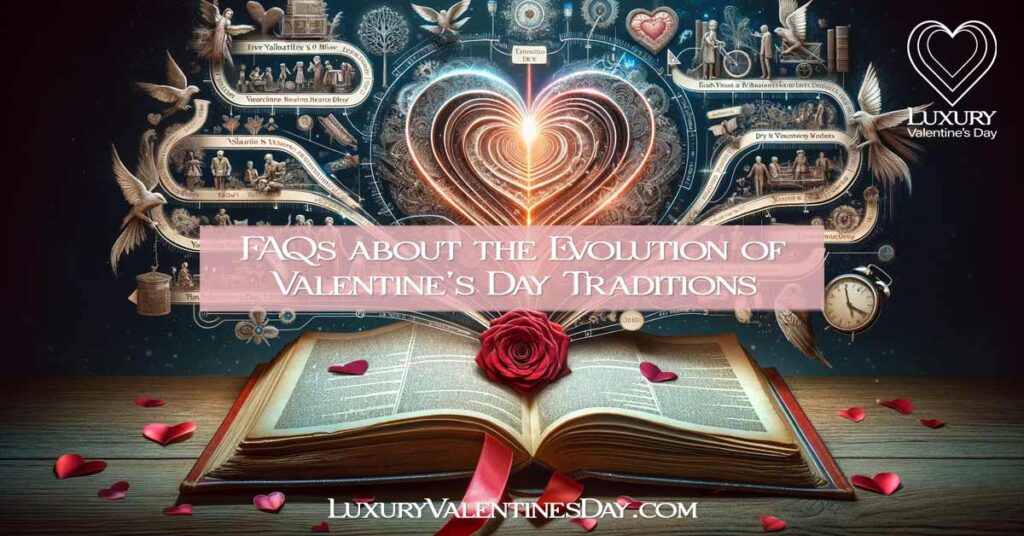
What is the Evolution of Valentine’s Day?
Valentine’s Day has evolved significantly from its ancient origins as a Roman festival. Initially a pagan celebration known as Lupercalia, it was later Christianized in honor of St. Valentine. Over the centuries, it transformed into a day of romantic expression, especially during the Middle Ages with the advent of courtly love. The Victorian era further shaped it with the popularization of Valentine’s cards and gifts, and today, it’s a global phenomenon celebrated with a blend of traditional and modern customs.
How Did Valentine’s Day Grow to Be Celebrated as It Is Today?
The celebration of Valentine’s Day as we know it today is a result of centuries of evolution influenced by cultural and social changes. Medieval courtly love traditions introduced romantic elements to the day. The industrial revolution and the Victorian era’s focus on sentimentality popularized the exchange of cards and gifts. In the 20th century, commercialization and globalization expanded its popularity, and now digital technology has introduced new ways of expressing love on this day.
How is Valentine’s Day Celebrated Differently Around the World?
Valentine’s Day celebrations vary widely across the world. In Japan, women give men chocolates on February 14th, and men return the favor on White Day, March 14th. In Wales, lovers exchange intricately carved wooden spoons. In the Philippines, mass wedding ceremonies are common on Valentine’s Day. Each culture has adapted the day to fit local customs and traditions, making it a diverse global celebration.
Does Valentine’s Day Ever Change?
Yes, Valentine’s Day continues to evolve. Its transformation is driven by cultural shifts, technological advancements, and global influences. The way Valentine’s Day is celebrated has adapted over time, reflecting changes in societal attitudes towards love and relationships. The digital age, for instance, has introduced new ways to celebrate, like online gifting and virtual dates, indicating that the holiday will continue to change with future trends and technologies.
My Final Thoughts About the Evolution of Saint Valentine’s Day
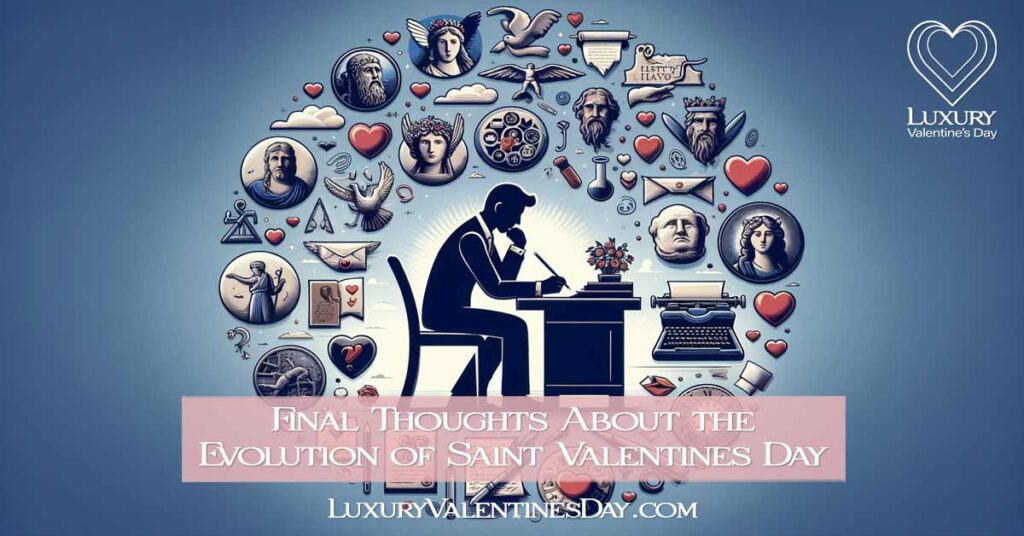
Valentine’s Day, in its ever-evolving glory, stands as a vibrant mosaic of human emotion and cultural expression. This day, transcending its ancient Roman beginnings, has blossomed into a global phenomenon, continuously reshaping itself to mirror the changing tapestry of human relationships.
This celebration’s journey from past to present encapsulates how love, in its myriad forms, adapts and thrives amidst shifting cultural landscapes and technological advancements. It’s a reminder of love’s enduring power, its ability to bridge distances and differences, adapting yet holding true to its core essence of connection and affection.
Looking ahead, Valentine’s Day promises to evolve further, weaving new traditions into its rich history. The future may bring novel ways to celebrate love, influenced by technological innovations and cultural shifts. But the heart of Valentine’s Day remains unchanged: a day dedicated to acknowledging and rejoicing in the myriad expressions of love.
In celebrating Valentine’s Day, whether through timeless traditions or modern interpretations, we embrace not just a date, but a universal sentiment that connects us all. It’s a day to honor love in its boundless forms, a celebration that will continue to resonate and reinvent itself in the hearts of people around the world.
Related Posts
- First Date Questions: Master the Art of Conversation on Your Next Date
- Date Ideas That Start with L: Lively and Loving Dates
- 101 Eco-Friendly Date Ideas for a Sustainable Valentine’s Day
- Date Ideas That Start with S: Sweet and Sensational Dates
- Physical Touch Love Language Long Distance: Nurturing Connection and Intimacy Across the Miles
- Date Ideas That Start with V: Vibrant and Versatile Dates













